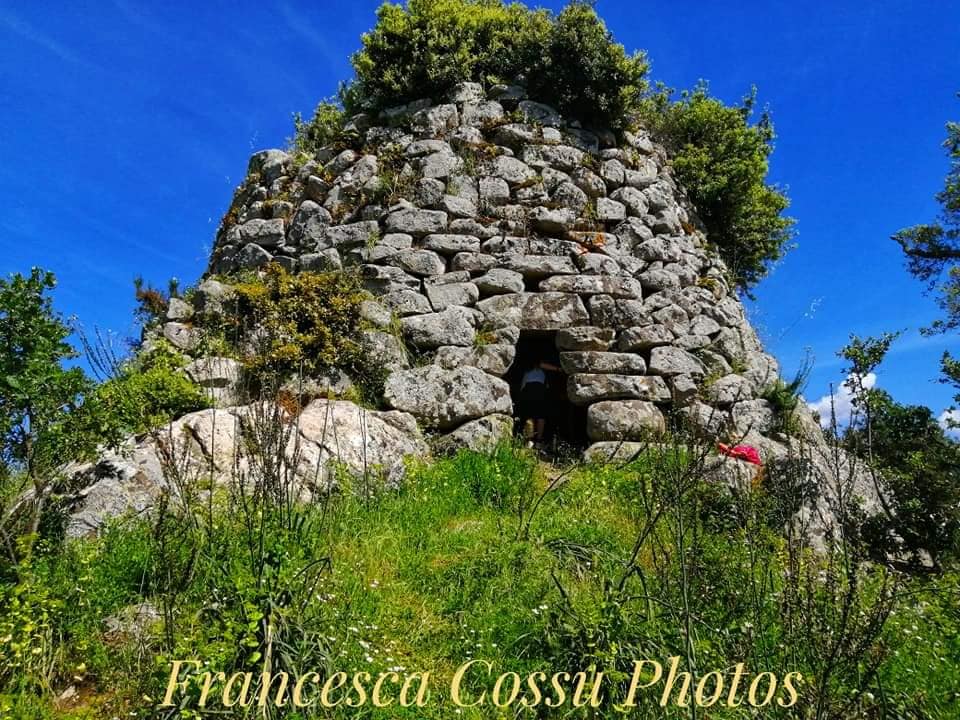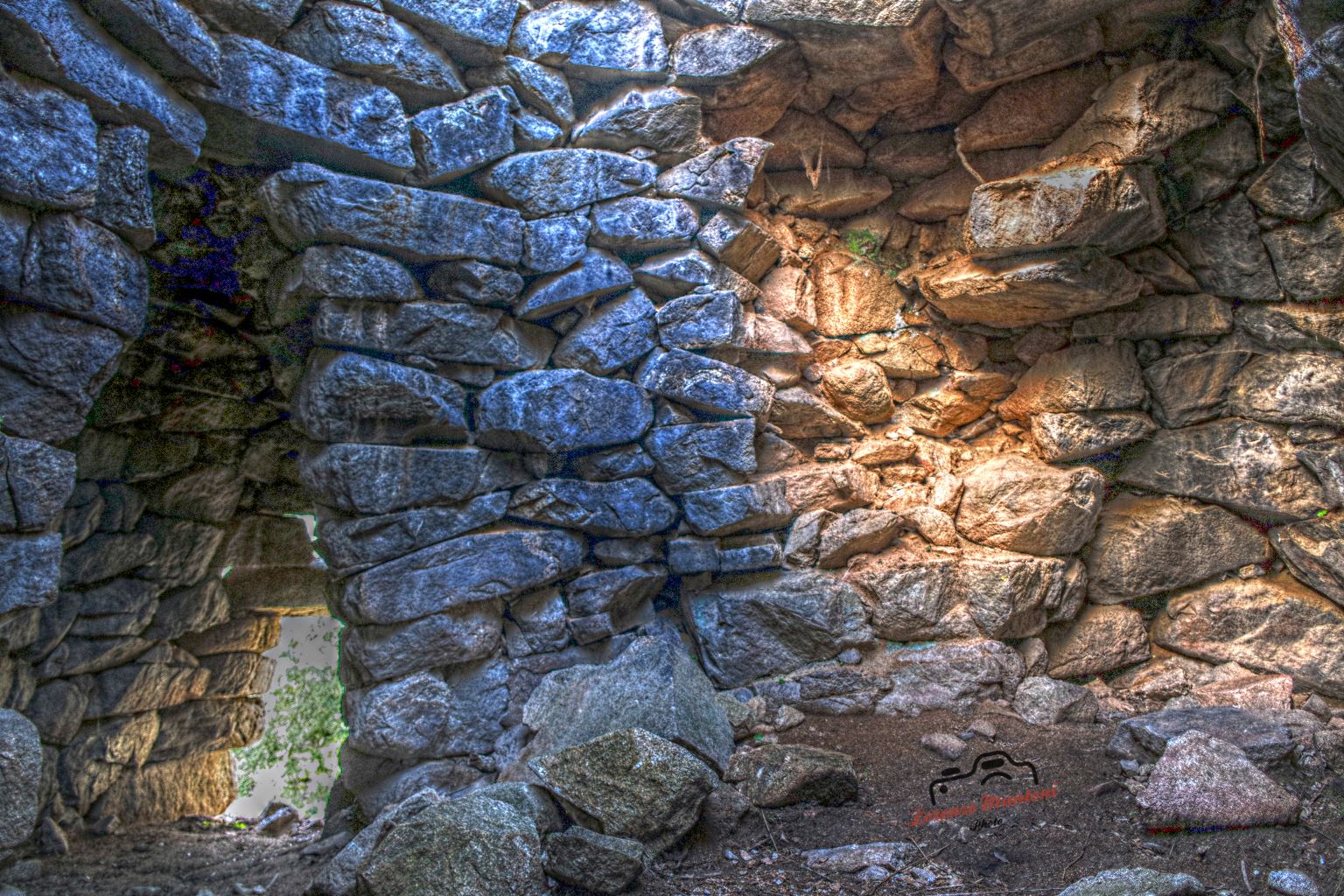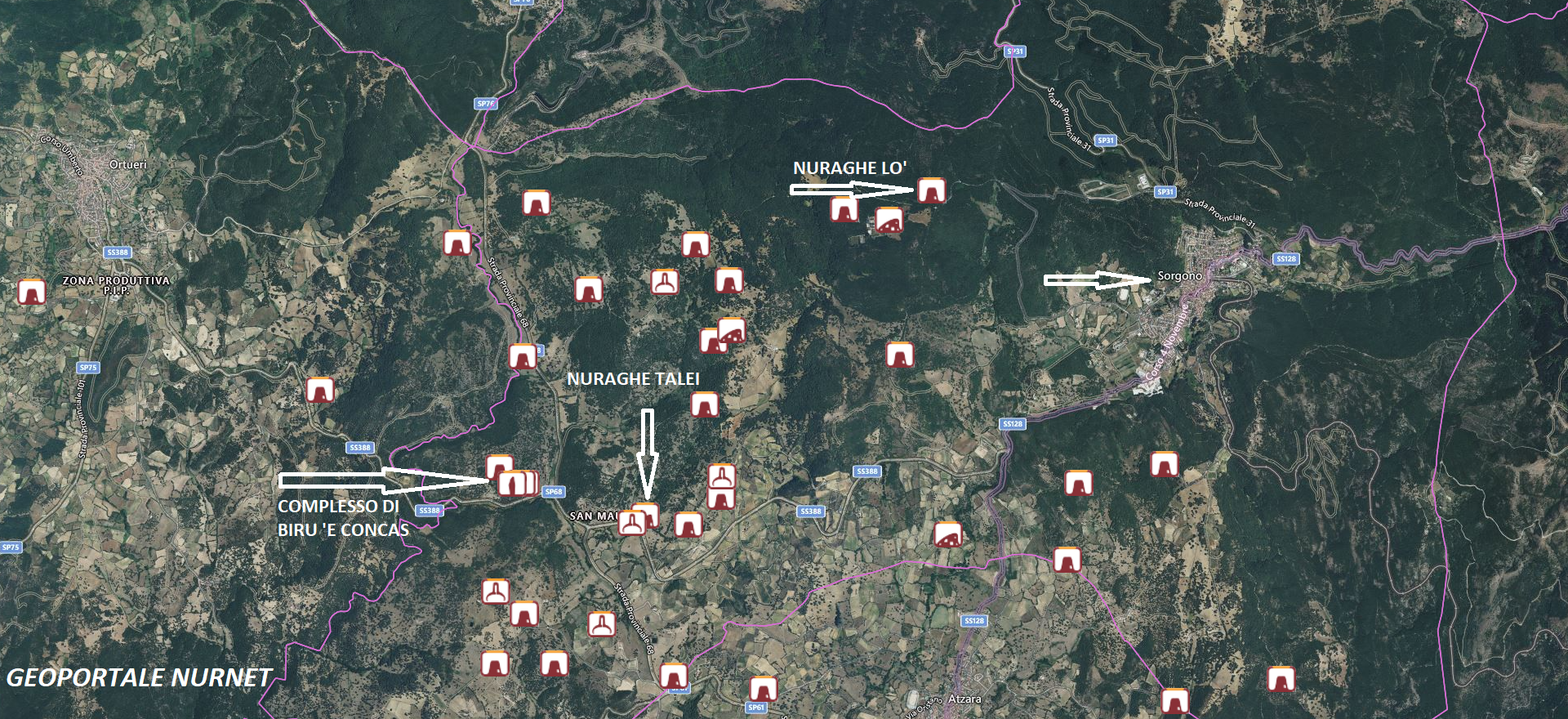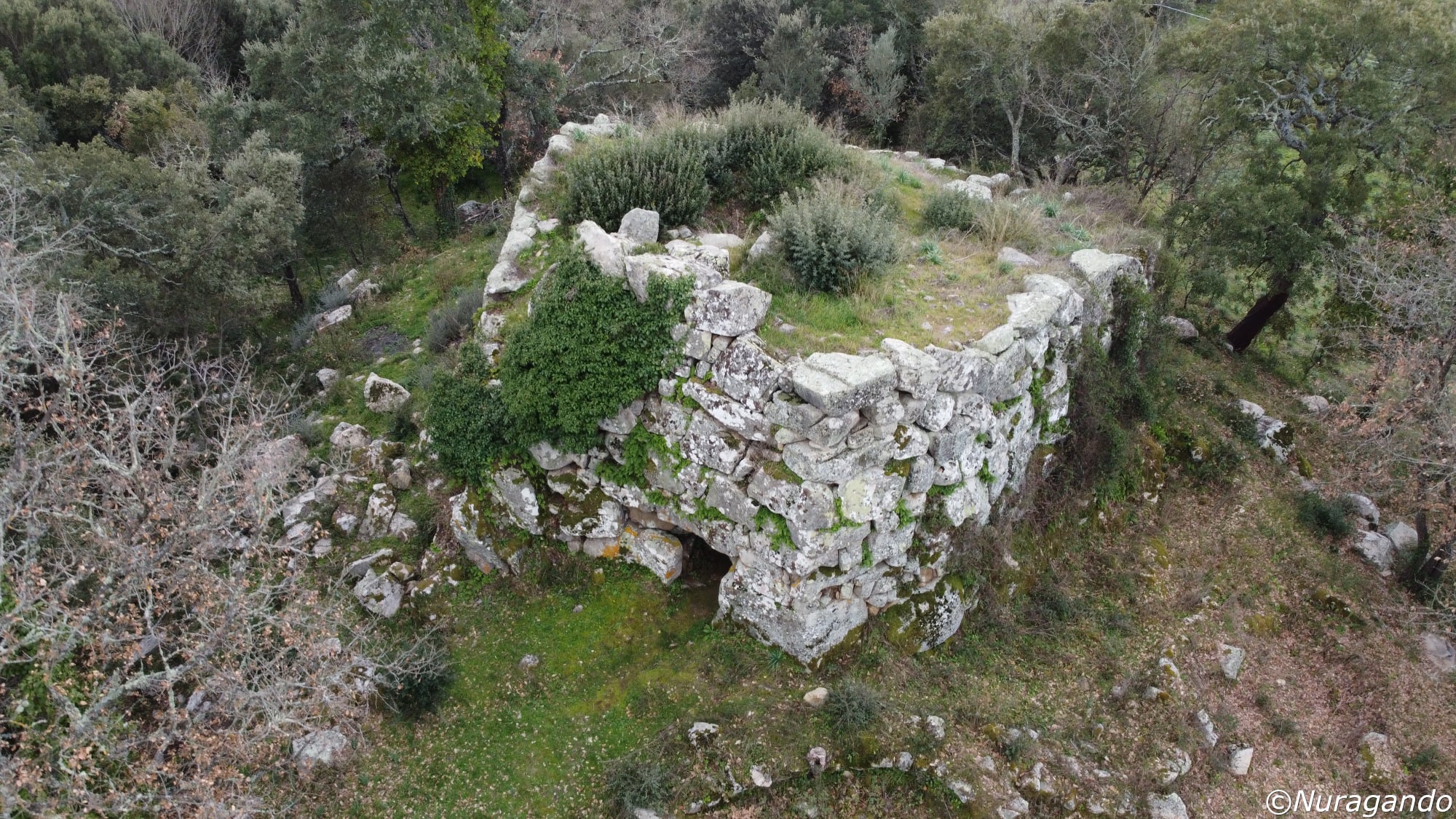74.2, 77.2, 78.2: The peculiarity of nuraghe Lò, in Sorgono, comes from the fact that it has a short corridor on the wall opposite the entrance, which leads to a large lintelled window, topped by a small discharge window. The nuraghe is a single-tower structure and shows no traces of any type of staircase. The entrance, located to the Northwest, has a lintel topped by a carefully crafted small discharge window.
Investigations have identified traces of human presence in the area of Biru ‘e Concas, in Sorgono, dating back to the period between the Late Neolithic (3300-2700 BC) and the Eneolithic (2700-1700). The most monumental testimonies are the menhirs present at the site: single, in pairs, in triads, in spectacular alignments formed by up to 20 menhirs, and in circles. Menhirs can also be seen overturned on the ground, either whole or in fragments. The site must have been even more extensive than it appears today.
The Talei complex, also in the territory of Sorgono, consists of a protonuraghe, a village, and a giant’s tomb. The protonuraghe, of the “corridor” type, has a vaguely ellipsoidal plan and is built against a granite outcrop. The masonry is made of large polygonal granite blocks.
The photos of nuraghe Lò are by Francesca Cossu, Giacomo Fantola, and Lorenzo Muntoni. Those of the Biru ‘e Concas site are by Antonello Gregorini, Marco Cocco, and Giacomo Fantola, while the photos of the nuragic complex of Talei are by Andrea Mura- Nuragando Sardegna, Gianni Sirigu, and Bibi Pinna.

















